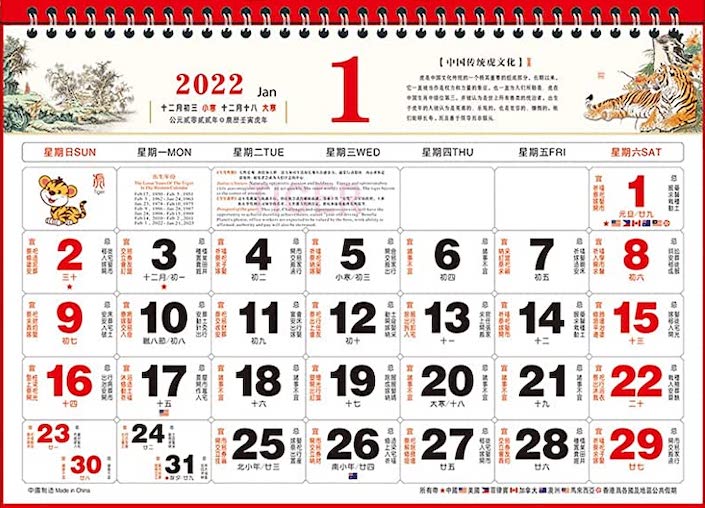

There were originally only four solar terms in the Shang dynasty: the summer solstice, the winter solstice and the spring and autumn equinoxes. The Chinese lunisolar calendar operates on a 60-year cycle.
CHINESE LUNAR CALENDAR FULL
Thus a 60-year cycle is formed, which figuratively was a full lifespan in dynastic times. These are used to mark each month and year and in total can create 60 stem-branch combinations. The Chinese lunisolar calendar operates on a sexagenary cycle (a 60-year cycle) which consists of 10 stems (干 gàn) and 12 branches (支 zhī). Each month is split into 上旬 (shàng xún), 中旬 (zhōng xún) and 下旬 (xià xún), marking the first, second and third week, respectively. Since 12 lunar months do not add up to a full solar year, a leap month (闰月 rùn yuè) is added every three years.ĭays within a month are also grouped into 9 or 10-day weeks known as 旬 (xún). The Chinese calendar year ends with the last winter month which is called 腊月 (là yuè). The first month of the year is called 正月 (zhēng yuè) which marks the start of the new year cycle (and consequently the Chinese New Year celebration). How does the Chinese calendar work?Įach month within the calendar starts with the new moon. In Chinese, the Chinese lunisolar calendar is typically referred to as the 农历 (nóng lì), which directly translates to "agricultural calendar."Ĭhinese farmers traditionally used the Chinese calendar as a guide for planting and harvesting crops. The Chinese accomplish this by adding a 13th month to their traditional calendar approximately once every three years. The traditional Chinese lunisolar calendar is thus a hybrid timekeeping method that takes into account both the moon's orbit around the earth and the earth's 365-day orbit around the sun. To remedy this discrepancy and to ensure that the traditional Chinese calendar keeps pace with the Gregorian calendar, the Chinese implemented the lunisolar method of timekeeping. The year is then divided into 12 lunar months, which inconveniently only adds up to 354 days per year, roughly 11 days short of the actual time it takes the earth to complete one full orbit around the sun: 365 days. You may wonder, what's the difference between a strictly lunar calendar and the Chinese lunisolar calendar?Ī lunar calendar is typically based on the moon's 29.53-day synodic orbit around the earth.

Often incorrectly referred to as a lunar calendar, the traditional Chinese calendar is in fact lunisolar.


 0 kommentar(er)
0 kommentar(er)
